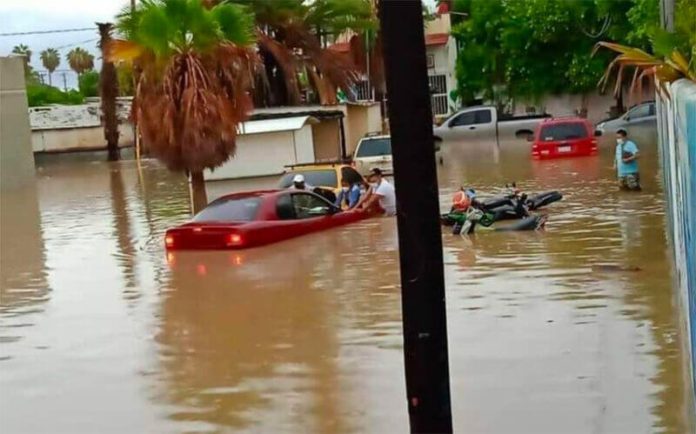Almost 200,000 electricity customers lost power on Thursday night after Hurricane Olaf brought strong winds and heavy rains to the southern portion of the Baja California peninsula.
With sustained wind speeds of 155 kmh and gusts to 185, Olaf made landfall as a Category 2 hurricane near San José del Cabo, Baja California Sur, at about 9:00 p.m. Once over land, Olaf was downgraded to a Category 1 hurricane before being degraded again to a tropical storm.
Only minor damages from the storm have been reported.
The Federal Electricity Commission reported that just under 192,000 customers in Los Cabos and La Paz lost power due to the storm. But service to 30% of affected customers was restored by Friday morning, the utility said.
The ISSSTE General Hospital in La Paz lost power at 12:40 a.m., provoking concern among people whose family members are receiving treatment in the facility.
The IMSS No. 6 Hospital in San José del Cabo was among buildings and homes affected by flash flooding in the Los Cabos area. Road access between San José del Cabo and Cabo San Lucas was cut off due to flooding and fallen trees and utility poles.
Some 20,000 tourists are currently in Los Cabos, where they took shelter in their hotels, according to the president of the local hotel association.
There have been no reports of loss of life due to the passing of the hurricane, which was about 100 kilometers west of La Paz at 10:00 a.m. CDT Friday. The United States National Hurricane Center said the storm is expected to move away from land on Friday night.
Heavy rain is expected to continue to fall in Baja California Sur throughout Friday.
A range of precautions were taken to minimize damage and the threat to human life. Civil Protection authorities ordered the closure of ports in locations such as Loreto, La Paz and Los Cabos, where large swells were reported, and the airports in the latter two destinations were closed since Thursday afternoon. The Los Cabos airport resumed operations on Friday morning.
Most economic activities were suspended in southern Baja California Sur, schools were shut and temporary shelters were opened in locations including Los Cabos and La Paz.
With reports from El Sudcaliforniano and TV Azteca
